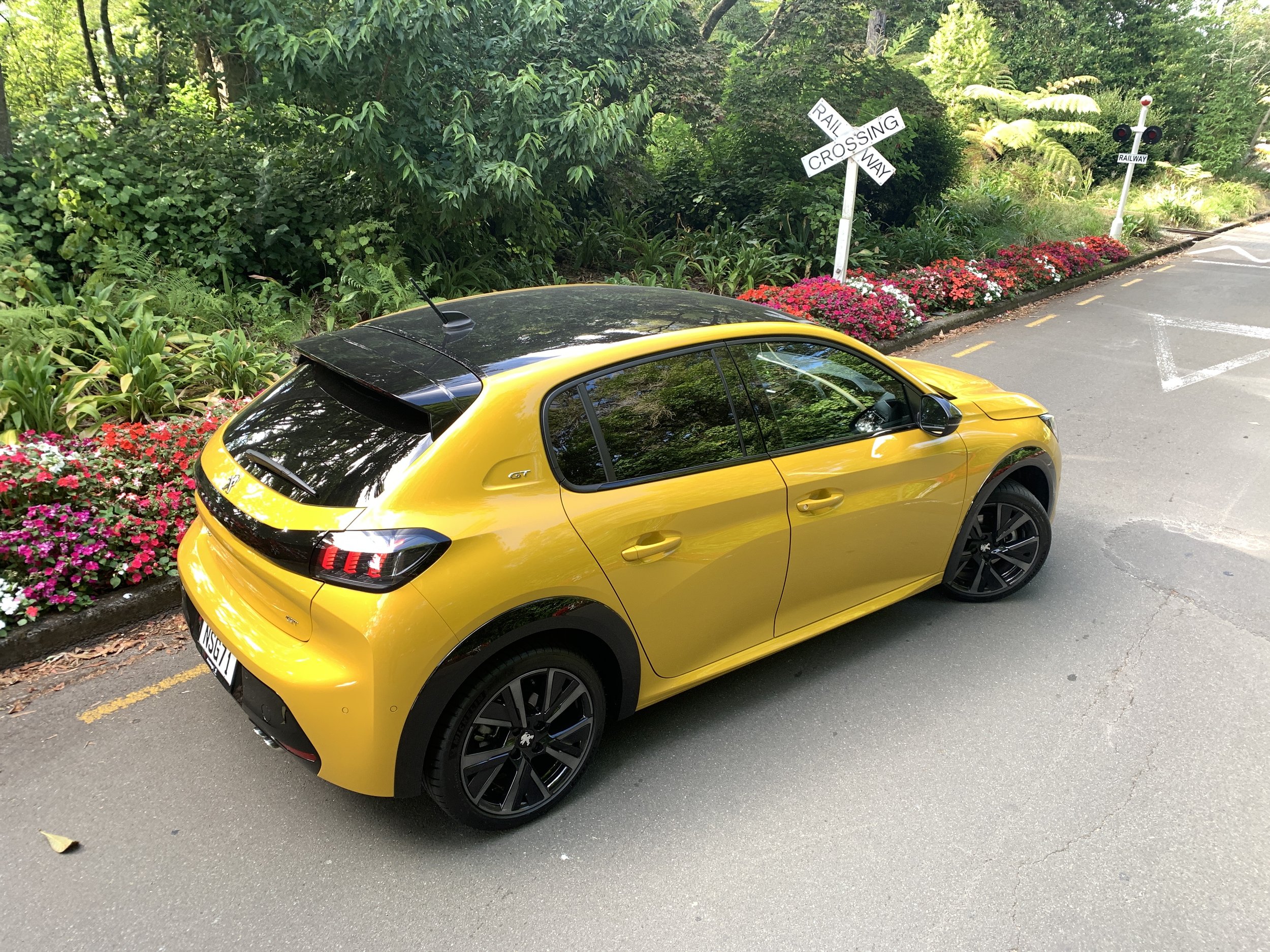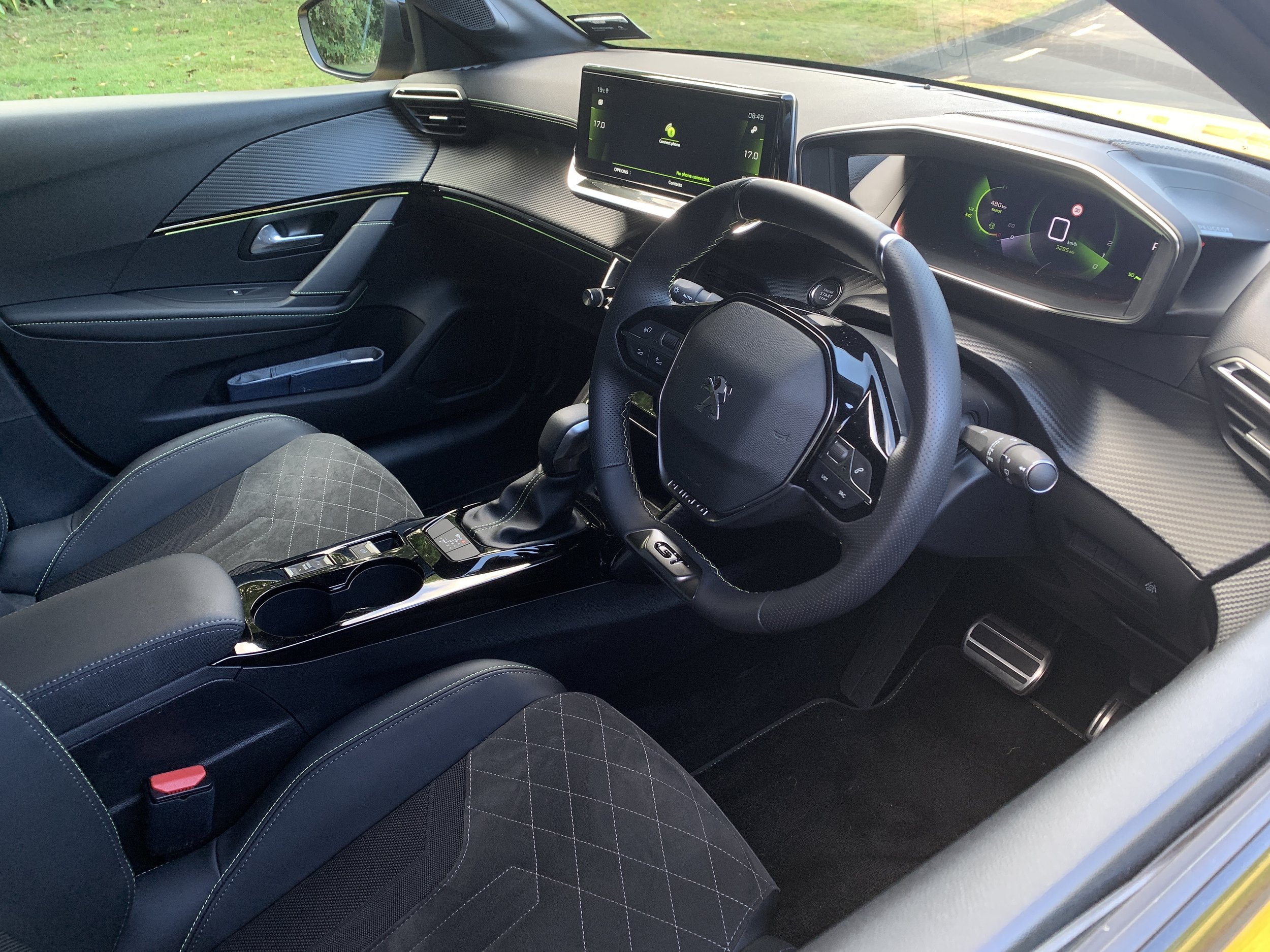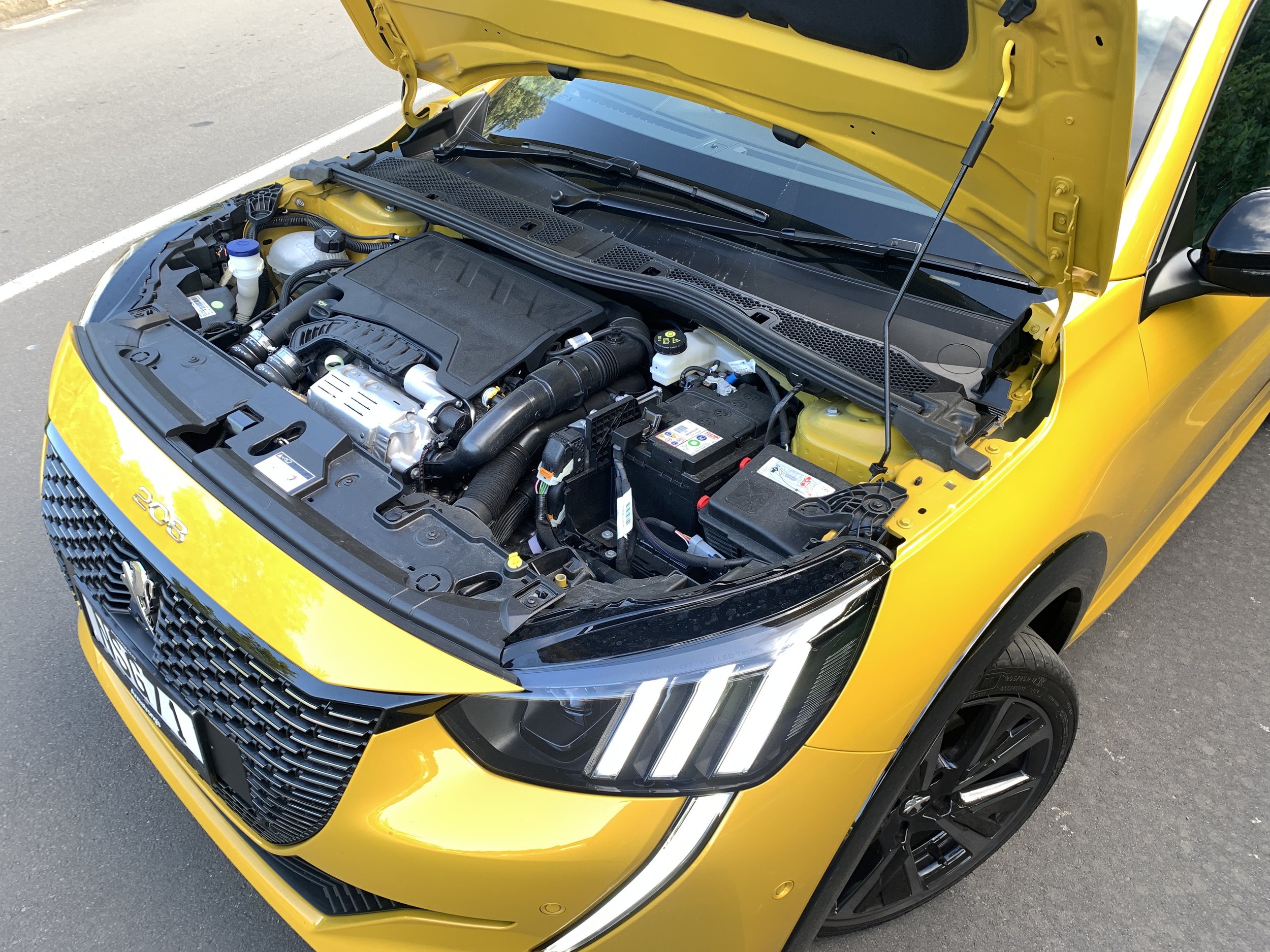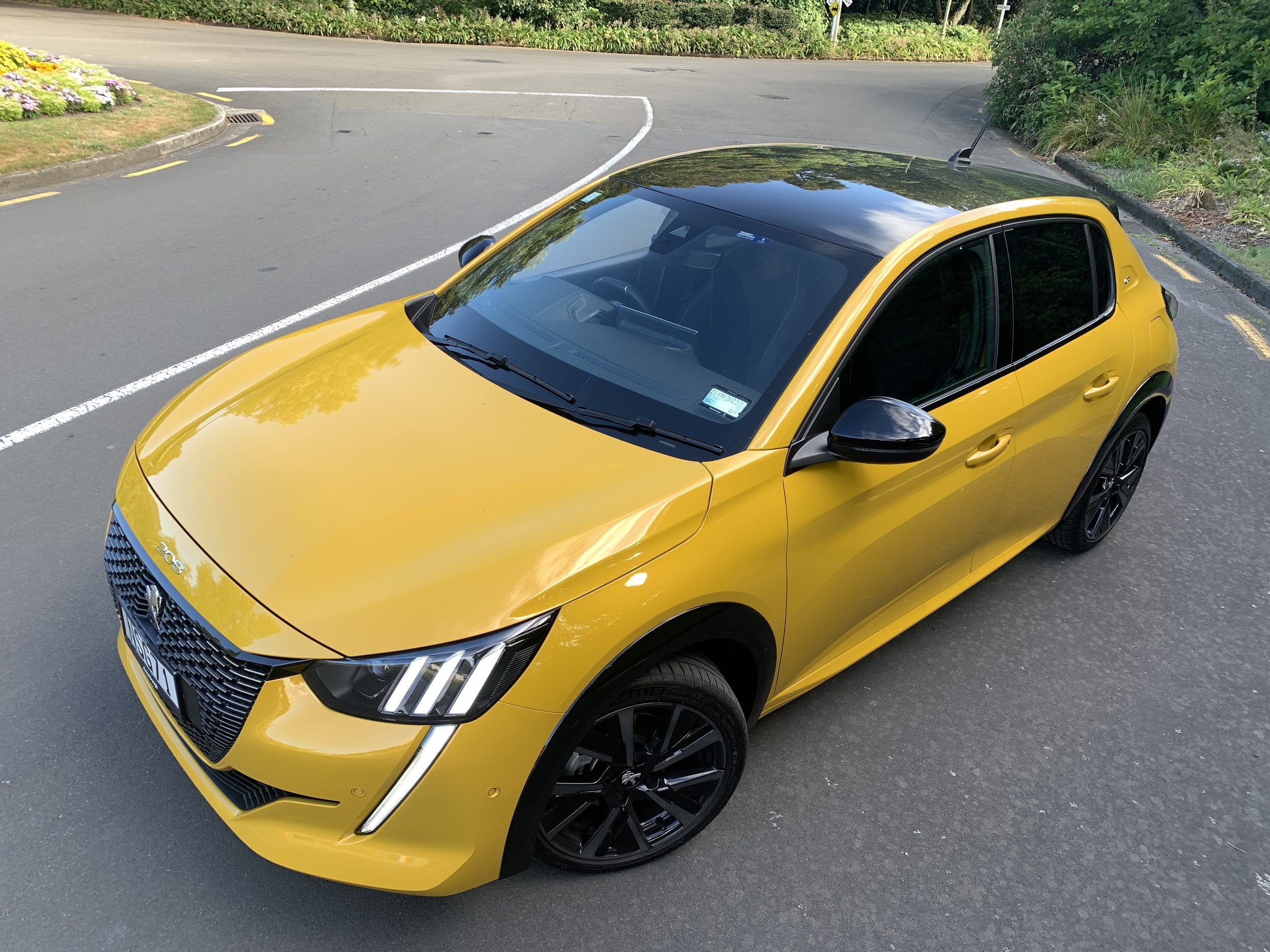Peugeot 208 GT roadtest review: Pump action player
/If the electric-dedicated edition doesn’t spark you up, there’s always the ‘other’ version.
Price: $37,990
Powertrain and economy: 1.2-litre turbo-petrol three-cylinder, 96kW/230Nm, 6-speed automatic, FWD, combined economy 6.3L/100km, CO2 145g/km.
Vital statistics: 4055mm long, 1765mm wide, 1430mm high, 2540mm wheelbase, luggage capacity 311 litres, 17-inch alloy wheels.
We like: Effervescent engine, lively chassis; it’s a more ‘hands-on’ kind of 208.
We don't like: Lack of paddle shifters, some of the cockpit weirdness.
ELECTRIC is increasingly ‘right’, petrol increasingly ‘wrong’ … yet, driving the fossil-fuelled version of the Peugeot 208 after spending time in the battery-dedicated lookalike left no doubt about which is the more electrifying.
Spoiler: It’s not the one that takes the breed into a new future.
This isn’t an anti-electric car rant. On the contrary. It’s massively obvious the internal combustion tech that has been the norm for more than a century now is not tenable in our future. Not, at least, while it relies on burning oil.
Yet, as much as products that pump carbon dioxide emissions are less palatable than those that don’t even have an exhaust pipe, it’s inevitable the transition from one tech to another won’t be instant or challenge-free, particularly in instances where vehicles are engineered for both.
Time in the 208 GT, with a triple-cylinder 1.2-litre petrol, following a week with the e-208 that’s a doppelganger in look, yet a world apart in operability, relates as much.
Buying a car wed to battery power is undoubtedly investing in a better tomorrow; not just for the good of the planet for also the good of your pocket.
Electricity is so much cheaper than pump fuel and EVs are cheaper to maintain since they have far fewer moving parts, thus requiring far less in the way of servicing.
But as the e-208 test experience reminded. EVs are more expensive to create, so they cost more. In this instance, even in today’s favourable condition of a Clean Car rebate, no road user charges and rising fossil fuel prices, the premium is much greater than the immediate daily savings can balance out. Years and years of driving are required to get the ledger looking positive.
Could you accept that? Many are showing desire to. Which is fine. However, I’d suggest the worst thing those who go electric might do, especially once they’ve signed for the ohm future, is to then sample the petrol.
Peugeot cars have fantastic reputation for being as driver-centric as they are chic, and their smallest hatches, particularly in performance pedigree, are renowned as loveable wee scamps.
Peugeot has worked hard to make the e-208 have a conventional car ambience, not just in look but aptitude.
Yet the toll of hefting an extra 400kg – the equivalent of three adults - over the petrol GT makes a huge impact on the ‘e’. At the time of its test, the battery-dedicated edition’s fun factor was determined to have become ‘diluted’.
Now the petrol has been driven, on all the same roads, that conclusion seems in hindsight to be optimistic. From a driver’s standpoint, the one ‘avec essence’ is … well, essentially more in tune with expectation.
The electric’s opus is the ride quality. With all its extra kilos are contained by the battery fitted under the floor, right between the wheel sets, it’s a small car that deports like one of much greater substance. That big car feel quells nasty lumps and bumps. It is also quicker off the line because electrics, by virtue of ability to generate maximum oomph from the get-go, just are.
Yet if you want a 208 that delivers the nimbleness, involvement and dexterity that this make’s small cars have always been famous for? You’d bet your baguettes on the petrol. All day, every day.
True, on first impression it almost feels too light. There’s a slightly floaty feel at first, and the amount of vertical movement initially makes you think the car has been set up for a pillowy soft ride. But if you chuck in a few corners, you’ll find why this version places so highly in hatchback comparisons. It has a dexterity the EV has, by virtue of its technical situation, largely had to abdicate.
The 1.4 has no such burden and is just more joyful. It aches for a corner-laden secondary road. Grip levels are good and body control is tight. It’s not only just so much more agile and responsive. Braking and steering feel are at higher level. It’s positive effervescent.
And yet, in the sum total of ownership, is in necessarily the better car? That’s actually quite a hard one to answer. As much as each demonstrates singular virtues, it’s clear either format also delivers common strengths. And weaknesses.
There’s no need to restate in depth my sentiment about how challenging the driving position is, particularly for those of us who are on the tall side.
All I would add to that argument is that, from hearing about from others who are less vertically-enhanced, the whole concept of a design that, instead of looking through your steering wheel to see your instruments like you do normally, delivers an extra-small steering wheel that demands you having to peer over it instead, is an opinion-splitter. Some will like the unconventional’ go-kart’ attitude, others will struggle to get comfy.
There’s no halfway with an adventurous, boldly futuristic cockpit design path that also provides new thought for how a steering wheel should be shaped (basically, slightly oddly), avant garde digital 3D instruments and a bank of switches that all seem to have two functions, with sometimes slightly comedic ‘game of chance’ operability. Peugeot has no plans to change. C’est la vie.
Though a slightly perplexing place, the cabin is at least very smartly rendered. The materials are mostly good quality and there’s a really appealing mix of finishes and textures that makes the cabin feel classy and interesting in equal measure. Okay, maybe in hindsight that fat band of high sheen alloy running across the centre console was a mistake. There were several moments when it caught the sun with blinding outcome, regardless that I was wearing sunglasses.
Cars in the category could be assumed to be less used by families than by couples or singles, so by that measure the 208 comes up well. While practicality isn’t the strongest suit, there’s nonetheless plenty of room in the front, and lots of little storage spaces in which to stash odds and ends. The rear seats are okay for adults, provided those in the front seats aren’t of beyond average height themselves. The boot is decent for this type and the rear seats fold down to extend the load area.
City car or country explorer? It certainly feels brilliant zipping around tight streets, and dimensionally seems suited for urban operation, yet it’d be churlish to suggest it’s not afraid to venture into the wider world. Again, it depends on the ‘fuel’ type. The slight tragedy of the electric is that it’s fantastically settled road feel would make it a great car for big trips. The only factor keeping it from attempting these might be the range, which my test found to be more limited than anything the car’s trip computer signalled.
The version that drinks from the pump has no such restraints. It’ll almost go three times as far on a tank as the battery model will on a full charge. The driving experience isn’t going to be quite as comfy, though, because the ride quality isn’t quite as cosseting. That’s the price of responsive handling, I guess. For a full picture of how well it goes for a serious long-distance expedition, I’ll await to hear from Rob Maetzig. He put the car into a 700km open road run, split into two legs. Brave or foolhardy?
More than the effects of road texture might start to weary after a while. The engine’s effervescent attitude might also be better tolerated in shorter bursts, though in saying that it certainly doesn’t feel daunted by the duration of any workout.
For all that the fizziness intrudes at aural level in the long run, this is another small capacity tri-cylinder that has to be admired for its fortitude and gutsiness.
Sure, the drawback of this badging is that you might imagine it’s a modern-day GTi equivalent. Sad news there, mon ami. It’s just not. No-where close to being not, actually.
Yet there’s easily enough pep to keep the car rolling along at orthodox speeds and, when you do have opportunity to pick up the pace, it doesn’t shirk. Initial acceleration is bettered by the e-208, but from 80kmh upward the petrol is likely quicker and certainly more comfortable in most driving situations.
That’s not just the engine. Buy into the fossil fuelled car and you get a proper gearbox; an eight-speed automatic which moves through the gears cleanly and smoothly and suits the car’s charisma.
You’ll ask about economy. I’ll say it wasn’t too bad at all for me; a 7.7 litre per 100km average is 1.6L/km off the car’s cited optimal, but isn’t too hard to live with, even with the fuel type it prefers reaching up to $3 a litre.
Agreed, much of what I’ve related might leave impression I’d take the petrol over the electric. Frankly, picking a winner was never the intention of this exercise. I think it’s great that Peugeot has a foot in both camps with an identical car. Each version has strengths, each weaknesses but there’s nothing that couldn’t be considered ‘character’ if you get the vibe.
The one assured aspect of owning this car is that it’ll always stand out from the masses. No matter what technology propels them, Peugeots are always fuelled by an abundance of character.




















